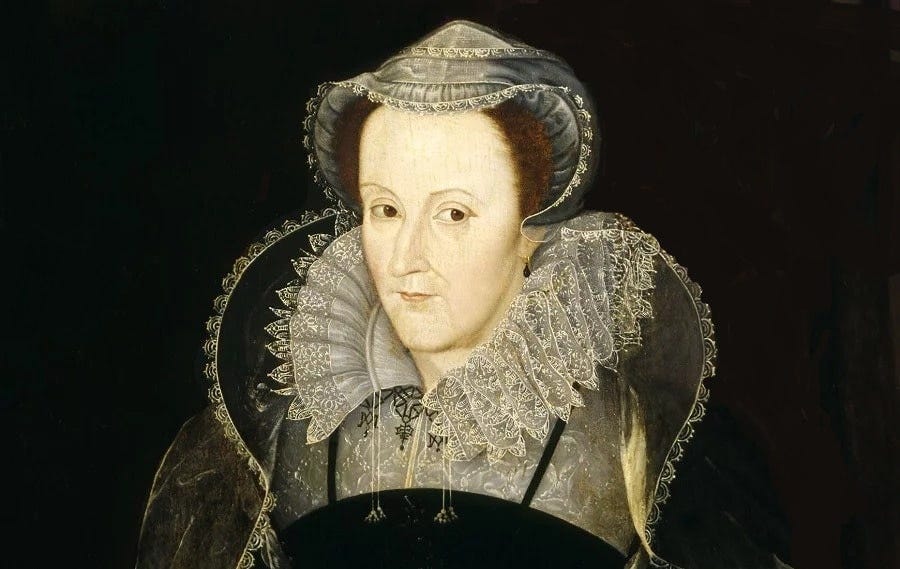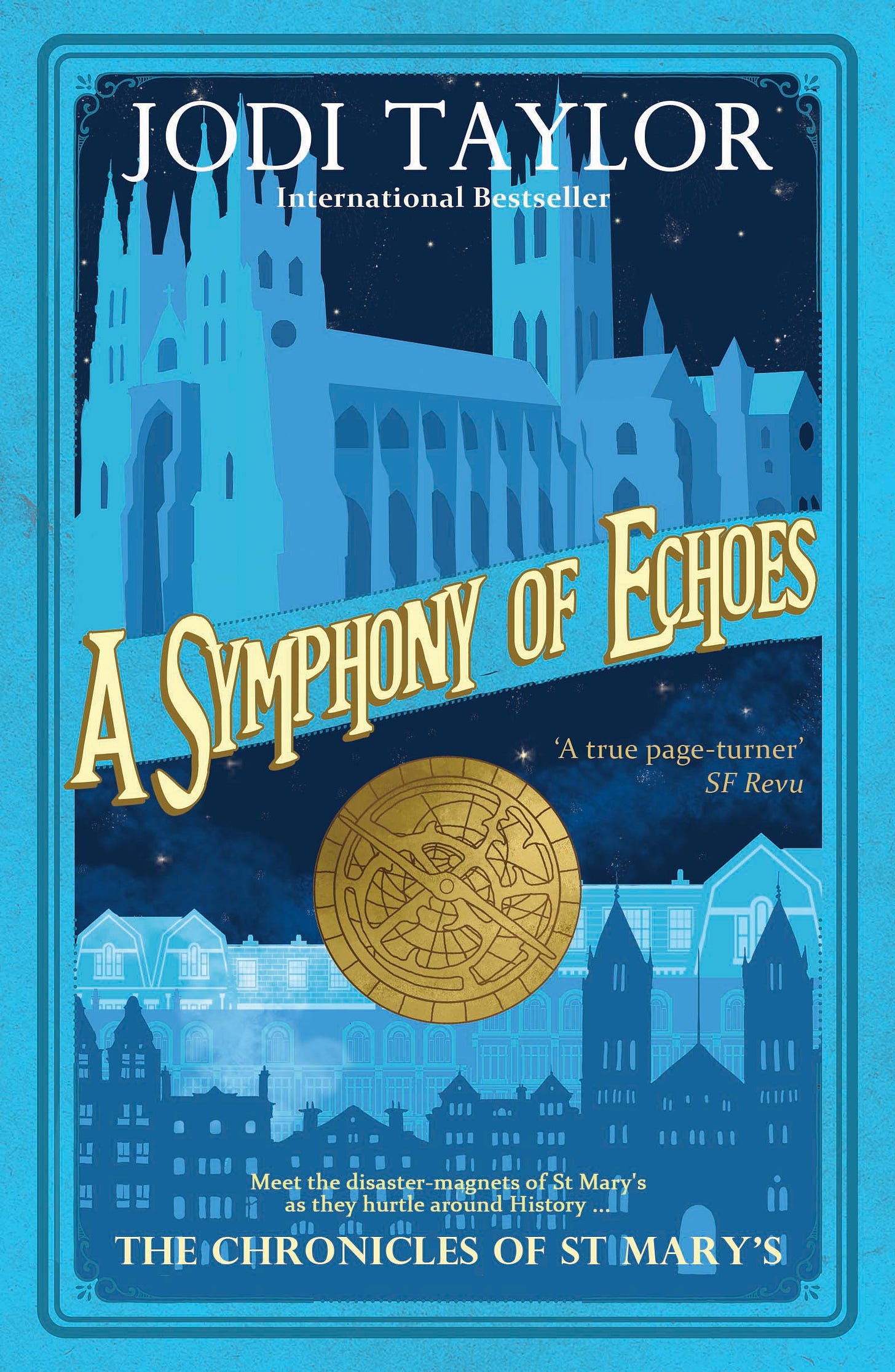Mary Stuart: The Tragic Queen of Scotland
Featured in "A Symphony of Echoes" by Jodi Taylor
In “A Symphony of Echoes” by Jodi Taylor, Max and the team from St Mary’s Institute of Historical Research jump back to Edinburgh in 1567 to correct the Mary Stuart anomaly.
Mary Stuart, often called Mary, Queen of Scots, remains one of the most enigmatic and controversial figures in Scottish and English history. Born into the royal House of Stuart, Mary’s tumultuous life was marked by political intrigue, religious conflict, and personal tragedy.
Mary Stuart was born on 8th December 1542, at Linlithgow Palace in Scotland, the only surviving legitimate child of King James V of Scotland and his French wife, Mary of Guise. Just days after her birth, her father died, and Mary became Queen of Scotland at just six days old.
As a young queen, Mary was sent to France for her safety and education. There, she was raised in the French court alongside her future husband, Francis II of France. Under the guidance of her mother and formidable grandmother, Antoinette de Bourbon, Mary received a classical education and cultivated a love for literature, music, and the arts.
In 1558, Mary married Francis II of France, cementing an alliance between Scotland and France. However, Francis’s untimely death in 1560 left Mary a widow at 18, forcing her to return to Scotland to assume her duties as queen.
Mary’s reign in Scotland was fraught with challenges, including religious conflict between Catholics and Protestants, political intrigue among rival factions, and tensions with her cousin, Queen Elizabeth I of England. Despite her efforts to rule wisely and fairly, Mary’s Catholic faith and her perceived closeness to Catholic powers in Europe made her a target for Protestant reformers and political adversaries.
Mary’s reign in Scotland was marred by personal and political turmoil, including two failed marriages, accusations of adultery and murder, and a series of revolts and uprisings against her rule. In 1567, Mary’s second husband, Henry Stuart, Lord Darnley, was murdered under mysterious circumstances, leading to widespread suspicion and scandal.
Amid growing unrest and accusations of complicity in her husband’s death, Mary was forced to abdicate the Scottish throne in favour of her infant son, James VI. She secretly married her third husband, the Earl of Bothwell, and that led to her eventual downfall. Elizabeth kept her alive as a shield against Philip of Spain because if anything happened to Elizabeth then Mary would become queen and ally with France through her powerful French relatives. This would tip the balance of power in Europe in France’s favour. It’s one of the reasons Elizabeth was so reluctant to execute her and it’s no coincidence that the Spanish Armada was launched after her death.
Mary’s long imprisonment in England came to an end in 1586 when she was implicated in a plot to assassinate Queen Elizabeth and place herself on the English throne. Following a trial and conviction for treason, Mary was executed on 8th February 1587, at Fotheringhay Castle in Northamptonshire, England, bringing an end to her tragic and tumultuous life.
Mary Stuart’s life and reign continue to fascinate historians, scholars, and enthusiasts, who debate her character, motivations, and legacy to this day. While some view her as a tragic heroine, unjustly persecuted for her Catholic faith and her claim to the English throne, others see her as a politically astute but ultimately flawed monarch whose ambition and personal failings contributed to her downfall.
Regardless of one’s interpretation of Mary’s life and reign, her story remains a compelling and poignant chapter in the annals of Scottish and English history, a testament to the complexities of power, politics, and identity in the turbulent world of the Tudors.
Find out how Max and the team fared by reading “A Symphony of Echoes” by Jodi Taylor. It is available in paperback, eBook and audiobook formats.
Have you discovered The Official Reading Companion and History Briefings for The Chronicles of St Mary’s series by Jodi Taylor?
If you've ever found yourself wondering who did what, when, and where in Jodi Taylor’s brilliant Chronicles of St Mary’s series — this is the companion guide you’ve been waiting for.
This guide is a must-have for both dedicated fans and curious newcomers. It contains synopses of every book and short story, detailed floor plans of St Mary’s Institute for Historical Research, History Briefings, chronological jump lists, character information, and more.
Whether you’re brushing up on the timeline or want to immerse yourself further in the chaos and charm of St Mary’s, this guide is your ultimate companion.
CLICK HERE to learn more.
I hope you have enjoyed this foray into history. Please subscribe to read more articles like this one. CLICK HERE to read more History Briefings.




